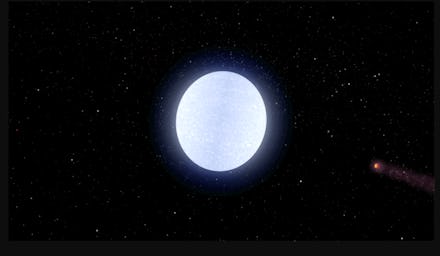Scientists discover giant, burning-hot planet KELT-9b

Scientists have discovered an incredibly hot planet orbiting a blue star approximately 650 light-years from Earth.
The story of the planet's discovery comes down to a small detail noticed from imagery of the KELT-9b's host star, KELT-9, under observation by a KELT telescope in Arizona.
Per a press release from NASA:
The KELT-9b planet was found using one of the two telescopes called KELT, or Kilodegree Extremely Little Telescope. In late May and early June 2016, astronomers using the KELT-North telescope at Winer Observatory in Arizona noticed a tiny drop in the star’s brightness -- only about half of one percent -- which indicated that a planet may have passed in front of the star.
The findings were revealed to the journal Nature by the Department of Astronomy at Ohio State University, which identified the planet as KELT-9b.
"This is the hottest gas giant planet that has ever been discovered," Scott Gaudi, astronomy professor at Ohio State University, told NASA.
According to NPR, Gaudi told Nature:
It's so hot that we think that there's no molecules that can live on the day side of this planet [...] Its day side would be very bright orange. Its night side would be very dark red. And it would have a cloud of evaporating hydrogen and helium, which would actually look violet.
Gaudi had a bet with a graduate student about whether this planet could even exist. "I won," he said.
The planet is tidally locked, the Washington Post reported, making one side permanently day and the other permanently night, as it does not rotate on an axis like Earth does. Temperatures on the day side can be approximately 7,820 degrees Fahrenheit.
While NPR reported that the planet has a comet-like tail, astronomer Drake Deming, a University of Maryland astronomer unaffiliated with the discovery, told the Post that this was an unproven hypothesis.
Adam Burrows, an astrophysicist at Princeton University unaffiliated with the finding, told Scientific American that KELT-9b was probably a good subject for precise study by a wide number of telescopes because of its brightness level.
Burrows described the planet as being both "bright enough" and "not too bright" for the telescopes to view.
NASA confirmed that astronomers want to examine KELT-9b with other telescopes, "including NASA's Spitzer and Hubble space telescopes, and eventually the James Webb Space Telescope, which is scheduled to launch in 2018."